Some time ago I noticed that there's a new console mode ENABLE_VIRTUAL_TERMINAL_PROCESSING and I decided to try it out. Here's my sample code:
// File: test1.c
#include <windows.h>
#include <stdio.h>
#include <stdlib.h>
#include <string.h>
const char * const TEST_STRING = "\x1B[31;1mRed\x1B[0m \x1B[32;1mGreen\x1B[0m \x1B[34;1mBlue\x1B[0m";
void ErrorExit(const char* errorMessage) {
puts(errorMessage);
exit(1);
}
int main(int argc, char** argv) {
if (argc != 2) {
ErrorExit("Usage: program (enable|disable|test|sample)");
}
HANDLE hInput = GetStdHandle(STD_INPUT_HANDLE), hOutput = GetStdHandle(STD_OUTPUT_HANDLE);
DWORD dwMode;
char *cmd = argv[1];
if (!strcmp(cmd, "enable")) {
/*
GetConsoleMode(hInput, &dwMode);
dwMode |= ENABLE_VIRTUAL_TERMINAL_INPUT;
SetConsoleMode(hInput, dwMode);
*/
GetConsoleMode(hOutput, &dwMode);
dwMode |= ENABLE_PROCESSED_OUTPUT | ENABLE_VIRTUAL_TERMINAL_PROCESSING;
if (!SetConsoleMode(hOutput, dwMode)) {
ErrorExit("SetConsoleMode failed.");
}
}
else if (!strcmp(cmd, "disable")) {
/*
GetConsoleMode(hInput, &dwMode);
dwMode &= ~ENABLE_VIRTUAL_TERMINAL_INPUT;
SetConsoleMode(hInput, dwMode);
*/
GetConsoleMode(hOutput, &dwMode);
dwMode &= ~ENABLE_VIRTUAL_TERMINAL_PROCESSING;
if (!SetConsoleMode(hOutput, dwMode)) {
ErrorExit("SetConsoleMode failed.");
}
}
else if (!strcmp(cmd, "test")) {
puts(TEST_STRING);
}
else if (!strcmp(cmd, "sample")) {
SetConsoleTextAttribute(hOutput, 0x0C);
printf("Red");
SetConsoleTextAttribute(hOutput, 0x07);
printf(" ");
SetConsoleTextAttribute(hOutput, 0x0A);
printf("Green");
SetConsoleTextAttribute(hOutput, 0x07);
printf(" ");
SetConsoleTextAttribute(hOutput, 0x09);
printf("Blue");
SetConsoleTextAttribute(hOutput, 0x07);
printf("\n");
}
else {
ErrorExit("Invalid command!");
}
return 0;
}
The code compiled successfully into test1.exe, but it didn't work as expected:
I am fairly sure I've got everything else correct. I'm running latest Windows 10 Enterprise 64-bit, version 10.0.17763.1.
I have also tried this but it made no difference:
else if (!strcmp(cmd, "test")) {
DWORD dwNumber = strlen(TEST_STRING), dwWritten;
WriteConsole(hOutput, TEST_STRING, dwNumber, &dwWritten, NULL);
puts("");
}
So why isn't my code working (still generating garbage when invoked as test1 test, after running test1 enable)?
